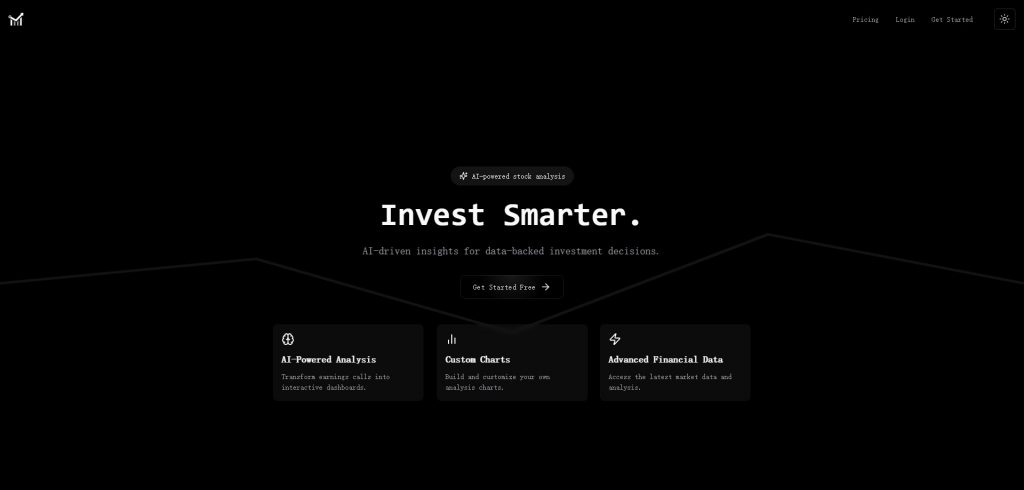20 Handy Reasons For Picking Ai Trade Websites
20 Handy Reasons For Picking Ai Trade Websites
Blog Article
Top 10 Tips On Assessing The Ai And Machine Learning Models Of Ai Analysis And Prediction Of Trading Platforms For Stocks
In order to ensure that you have accurate, reliable, useful insights, it is vital to evaluate the AI and machine-learning (ML), models used by prediction and trading platforms. Models that are poorly constructed or overly hyped-up could lead to inaccurate forecasts and financial losses. Here are our top 10 suggestions on how to assess AI/ML platforms.
1. Understanding the model's goal and the way to approach
Clear objective: Determine if the model is designed to be used for trading in the short term, long-term investment, sentiment analysis or for risk management.
Algorithm disclosure: Determine whether the platform is transparent about the algorithms it employs (e.g. neural networks and reinforcement learning).
Customization. Determine whether the model is able to be tailored to your trading strategies, or your risk tolerance.
2. Review model performance by analyzing the metrics
Accuracy: Check the accuracy of the model in forecasting the future. However, do not solely use this measure because it could be misleading when used with financial markets.
Precision and recall. Evaluate whether the model can accurately predict price changes and reduces false positives.
Risk-adjusted returns: Find out whether the model's forecasts will lead to profitable trades, after taking into account risks (e.g. Sharpe ratio, Sortino coefficient).
3. Check the model by Backtesting it
Historical performance: Backtest the model with historical data to see how it been performing in previous market conditions.
Check the model against data that it hasn't been taught on. This will help avoid overfitting.
Scenario Analysis: Examine the model's performance in different market conditions.
4. Make sure you check for overfitting
Overfitting signals: Look out for models performing extraordinarily well with data-training, but not well with data that is not seen.
Regularization Techniques: Look to see if the platform uses techniques like dropout or L1/L2 regularization to prevent overfitting.
Cross-validation (cross-validation) Verify that your platform uses cross-validation for assessing the model's generalizability.
5. Examine Feature Engineering
Relevant Features: Look to determine if the model has significant features. (e.g. volume and price, technical indicators as well as sentiment data).
Choose features carefully: The platform should only include statistically significant data and not irrelevant or redundant ones.
Dynamic features updates: Check whether the model adjusts with time to incorporate new features or changes in market conditions.
6. Evaluate Model Explainability
Interpretability: The model needs to be able to provide clear explanations for its predictions.
Black-box model Beware of applications that use models that are too complex (e.g. deep neural network) without explaining tools.
User-friendly insights : Find out if the platform is able to provide actionable information in a format that traders can be able to comprehend.
7. Check the ability to adapt your model
Market fluctuations: See whether your model is able to adjust to market fluctuations (e.g. new rules, economic shifts, or black-swan events).
Continuous learning: Ensure that the platform is regularly updating the model by adding new information to enhance the performance.
Feedback loops. Be sure your model is incorporating the feedback from users as well as actual scenarios to enhance.
8. Examine for Bias, Fairness and Unfairness
Data biases: Make sure that the data used in training are valid and free of biases.
Model bias: Determine if you can actively monitor and mitigate biases that exist in the predictions of the model.
Fairness: Make sure that the model doesn't disadvantage or favor certain sectors, stocks, or trading strategies.
9. Examine Computational Efficiency
Speed: See if you can make predictions using the model in real-time.
Scalability: Check whether the platform is able to handle massive datasets and many users without performance degradation.
Utilization of resources: Determine if the model is optimized to utilize computational resources effectively (e.g. use of GPU/TPU).
Review Transparency and Accountability
Model documentation: Ensure the platform has a detailed description of the model's structure as well as the training process and the limitations.
Third-party auditors: Make sure to see if a model has undergone an independent audit or validation by a third-party.
Error Handling: Verify whether the platform has mechanisms to detect and correct errors in the models or in failures.
Bonus Tips
Case studies and user reviews Review feedback from users to get a better idea of the performance of the model in real-world situations.
Trial period - Try the demo or trial version for free to test out the model and its predictions.
Customer Support: Verify that the platform provides solid technical or model-specific assistance.
Check these points to evaluate AI and predictive models based on ML, ensuring that they are trustworthy, transparent and in line with the trading objectives. Follow the top rated trade ai for blog tips including ai investing app, stock analysis websites, ai trading software, ai stocks, invest ai, investment ai, copyright advisor, ai stocks, canadian ai stocks, getstocks ai and more.
Top 10 Tips For Assessing The Trial And Flexible Of Ai Stock Predicting/Analysing Trading Platforms
Before signing to a long-term agreement It is important to try the AI-powered stock prediction system and trading platform to determine whether they meet your requirements. Here are the top 10 tips for evaluating each aspect:
1. Try it out for free
Tip: Check to see if the platform allows users to try its features for free.
The reason: You can try out the platform at no cost.
2. Limitations on the time of the trial
Tip - Check the length and restrictions of the trial (e.g. restrictions on features or access to data).
Why? Understanding trial constraints will allow you to determine if the evaluation is complete.
3. No-Credit-Card Trials
You can find trial trials for free by searching for ones that do not ask you to supply the details of your credit card.
Why? This will lower the risk of unplanned charges and make it easier for you to opt out.
4. Flexible Subscription Plans
TIP: Make sure that the platform offers flexible subscriptions (e.g. quarterly or annually, monthly) and transparent pricing different tiers.
Flexible plans allow you to choose the amount of commitment that's best suited to your budget and preferences.
5. Customizable Features
Check whether the platform offers customization options, such as alerts and levels of risk.
The reason: Customization will ensure that the platform adapts to your individual needs and goals in trading.
6. Simple Cancellation
Tip Assess the ease of cancelling or downgrading a subscription.
The reason: A simple cancellation process ensures you're not stuck with a plan that doesn't work for you.
7. Money-Back Guarantee
Tips: Select platforms that provide a money back guarantee within the specified period.
Why: You have an extra security net in case you aren't happy with the platform.
8. Access to all features during Trial
TIP: Make sure that the trial gives access to all core features, not just a limited version.
You'll be able make the right choice by testing the complete functionality.
9. Support for Customers During Trial
Examine the quality of customer service during the trial period of no cost.
What's the reason? Dependable support guarantees you'll be able to solve issues and maximize the trial experience.
10. After-Trial Feedback Mechanism
Check if your platform is soliciting feedback on how to improve the service after the trial.
Why: A platform which values user feedback is likely to develop faster and better meet users' needs.
Bonus Tip: Scalability Options
The platform must be able to increase its capacity in response to your expanding trading activities by providing you with higher-level plans and/or additional features.
If you carefully consider these options for testing and flexibility, you'll be able to make an informed decision as to whether or not you should use an AI stock prediction trading platform is suitable for your needs. Check out the top rated best ai for trading for website recommendations including ai stock trading app, stock analysis app, ai trade, ai stock picks, trade ai, ai trading app, ai for investing, copyright ai trading bot, ai for investing, ai trading app and more.